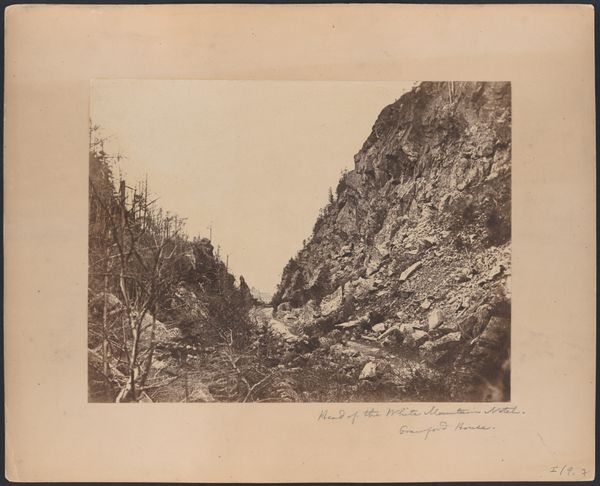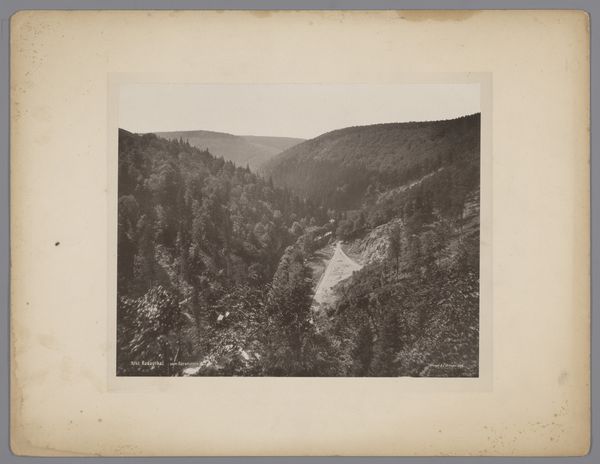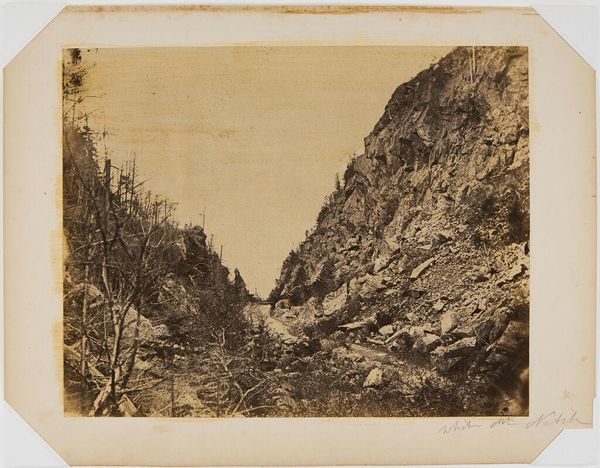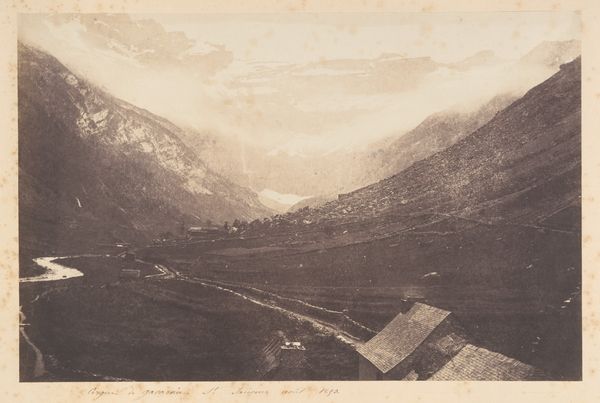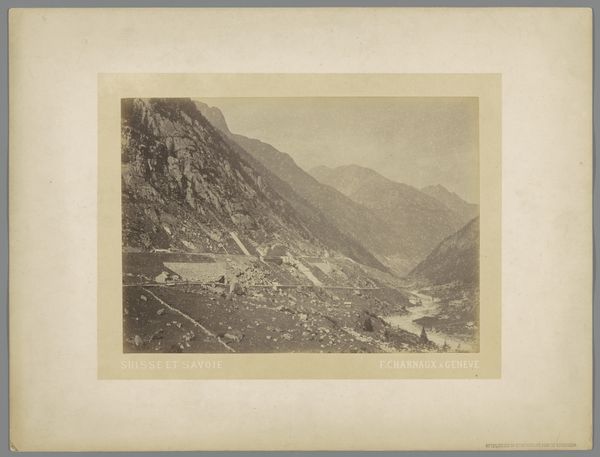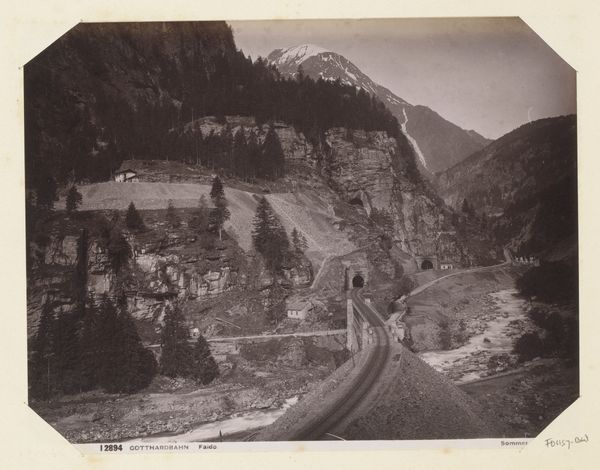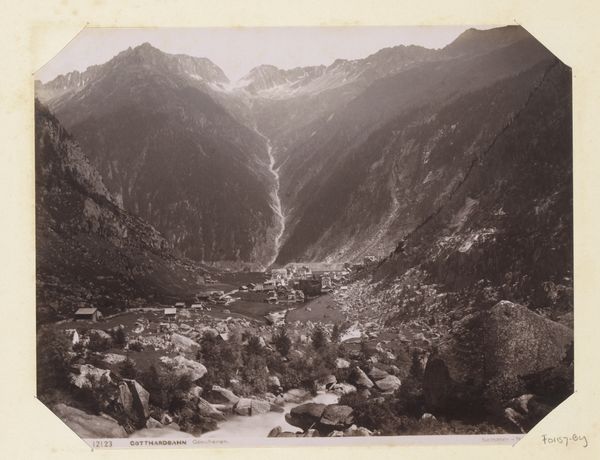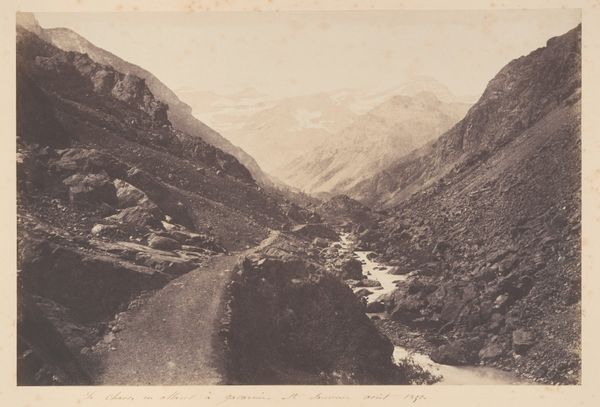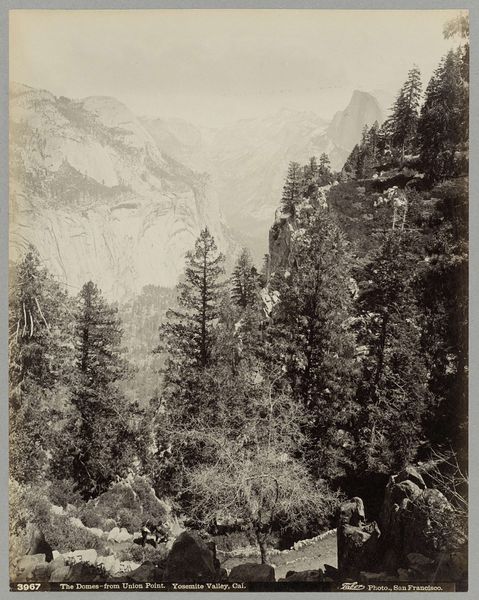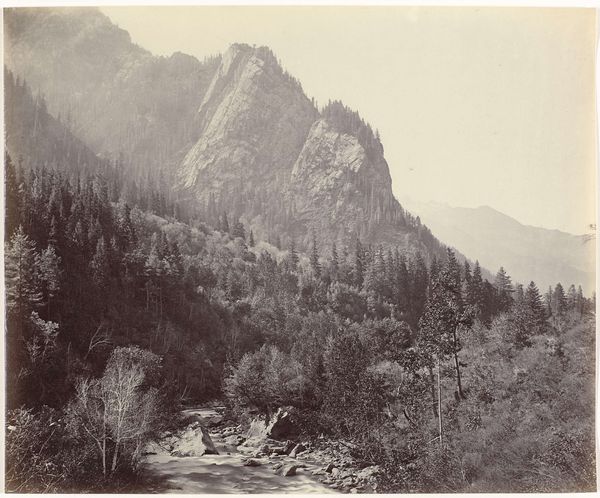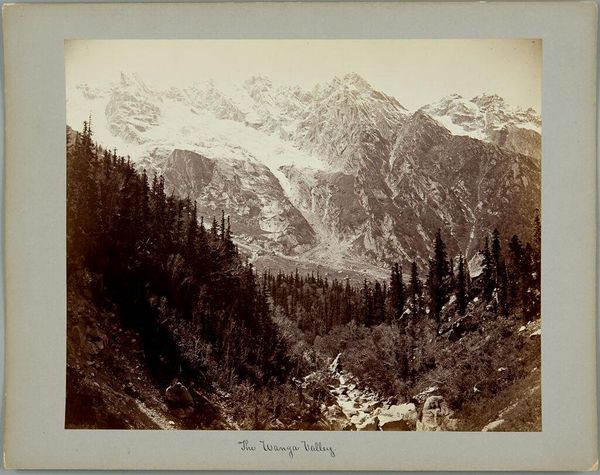
Gorge d'Astos, prise en revenant du lac d'Oo, Luchon 1853
0:00
0:00
print, photography
# print
#
landscape
#
photography
#
realism
Dimensions: Image: 9 3/4 × 14 5/16 in. (24.7 × 36.3 cm) Sheet: 12 in. × 18 9/16 in. (30.5 × 47.2 cm)
Copyright: Public Domain
Curator: This photogravure by Joseph Vigier, titled "Gorge d'Astos, prise en revenant du lac d'Oo, Luchon," made in 1853, presents a striking landscape. What is your first impression? Editor: A feeling of isolated passage. That narrow path etched into the mountainside gives me the sense of a lone figure forging ahead, maybe reflecting after experiencing the sublime at the lake. Curator: I agree; the placement of that thin path serves to direct the eye from the darker, granular foreground, up to the lighter tonalities in the mountainous distance, creating recession. Editor: Absolutely. The mountain road seems to be an old path, with evidence of human traffic and intervention to tame the landscape. We've imprinted ourselves on even these remote spaces. Curator: Observe the artist's meticulous placement of tonal value that enhances spatial depth; for instance, the contrast between the shadowed gorge and the sunlit peaks beyond. Vigier demonstrates how manipulating gradients establishes a perspectival field. Editor: Yes, there is great power here. I see that pathway as more than just a compositional tool. It is loaded with narrative implications—the trail as a universal symbol of life’s journey, pilgrimage, reflection. This reminds me that water has the potential of washing everything. Curator: The realism style combined with photography certainly aids this symbolic potential. Through the photographic lens, we have a near tangible surface, highlighting details in the crags and stone faces along that same trail, grounding viewers in an actual experience of place. Editor: Quite. One might argue that the symbolism, even its sacred aspect, resides partly in our own projected interpretation. But perhaps Vigier also sensed this tension between nature's indifferent vastness and our need to find significance within it. Curator: A compelling thought, how this 19th-century vista might anticipate a modern grappling with our place in the world. Editor: I agree; considering this image’s cultural memory adds nuance. It deepens my sense of connection to it. Curator: I have a new understanding of Vigier's use of shape and contrast, beyond mere technical exercise. Editor: Me too, It's fascinating how his personal trek echoes our own explorations of meaning.
Comments
No comments
Be the first to comment and join the conversation on the ultimate creative platform.
